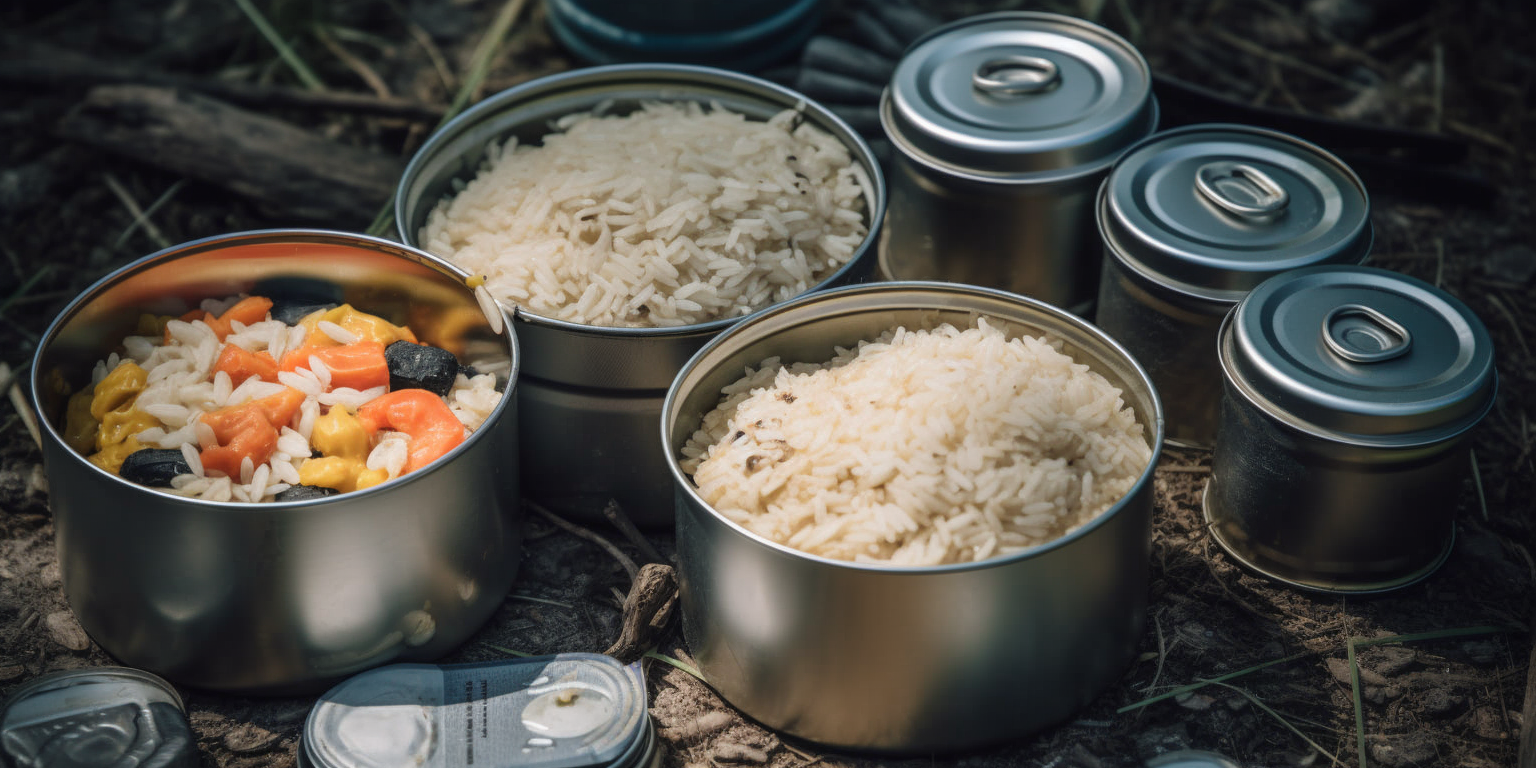
Stocking Your Emergency Food Supply on a Budget
Stocking Your Emergency Food Supply on a Budget
In the UK, emergency situations can arise at any time, whether it's a flood, fire, financial, domestic or personal emergency. One way to prepare for such situations is by creating an emergency food supply. However, the idea of stocking up on food for emergencies can be daunting, especially if you're on a tight budget. In this article, we'll provide some tips and tricks for building an emergency food supply on a budget.
Why You Should Have an Emergency Food Supply
Having an emergency food supply can help you prepare for unforeseen circumstances such as power outages, job loss, or even a pandemic. According to a survey by YouGov, 72% of UK adults have an emergency kit or supplies, such as food and water, ready to use in the event of an emergency. When you have a stockpile of food, you can rest easy knowing that you'll have enough to eat even if you can't leave your home or access grocery stores.
Assessing Your Needs: How Much Food to Store
When creating your emergency food supply, it's essential to assess your needs carefully. Consider factors such as the number of people in your household, any dietary restrictions, and the potential length of the emergency. The British Red Cross recommends that households have at least three days' worth of food and water in their emergency supplies, whilst the UK government recommends that households be prepared to sustain themselves for up to 10 days in the event of an emergency.
Building Your Emergency Food Supply on a Budget
Stocking up on food can be expensive, but there are ways to do it on a budget. Look for sales and discounts on non-perishable items, buy in bulk to save money, and purchase items with a long shelf life. According to the Office for National Statistics, in the UK, the average household spends around £60-£70 per week on food. By planning and purchasing occasional non-perishable foods in advance, you can reduce the cost of your emergency food supply and save money in the long run.
Essential Items to Include in Your Emergency Food Supply
When creating your emergency food supply, it's essential to include a variety of foods that can provide nutrition and energy. Some good options include canned fruits and vegetables, dried beans and legumes, pasta, rice, and canned meats such as tuna or chicken. Don't forget to include snacks and treats to help boost morale during an emergency.
For a list of 50 ideal foods for stockpiling, see here.
Foods with a Long Shelf Life: Your Best Bet for Emergency Storage
Foods with a long shelf life are ideal for emergency storage. Some examples include canned goods, dry pasta and rice. There are also specialist freeze-dried meals that have shelf-lives of up to 25 years, however these can be expensive. Pay attention to expiration dates and rotate your stockpile to ensure that you're always consuming the oldest items first.
Saving Money: Tips for Buying Emergency Food in Bulk
Buying in bulk is an excellent way to save money when creating an emergency food supply. Look for deals on bulk items at supermarkets and wholesale stores or online retailers. You can also save money by purchasing items in large quantities directly from food manufacturers by setting up wholesale accounts.
Storing Your Emergency Food Supply: Best Practices and Tips
When storing your emergency food supply, it's essential to keep it in a cool, dry place away from direct sunlight. Label your items with the purchase date and expiration date, and make sure to store them in airtight containers to prevent moisture and pests from getting in.
Remember, nothing is more expensive than letting food go to waste!
Rotate your stockpile by consuming the oldest items first and replacing them with fresh ones. Make sure to keep an inventory of your stockpile and update it regularly.
Don't Forget Water: How to Store Enough for Emergencies
Water is just as crucial as food in an emergency situation. Make sure to stockpile enough water to last at least three days. A good rule of thumb is to have four litres of water per person per day. Store your water in clean, food-grade containers, and rotate it every six months.
Putting Your Emergency Food Supply to the Test: A Mock Emergency Drill
Once you've created your emergency food supply, it's a good idea to put it to the test. Conduct a mock emergency drill to see how well your supply holds up. This will give you a better idea of what you might need to add or adjust in your stockpile. You'll also get a sense of how much water and food your family will consume in a day, so you can adjust your supply accordingly.
Final Thoughts
Creating an emergency food supply can seem like a challenging and expensive task, but it's an essential step in preparing for unexpected situations. By assessing your needs, purchasing non-perishable foods with a long shelf life, and storing them properly, you can build a stockpile that will keep you and your family fed during emergencies. With these tips, you can create an emergency food supply that fits your budget and gives you peace of mind.
Suggested Articles

The Art of Lightweight Camping: Tips for Minimalist Adventures
The allure of the great outdoors calls to many, but the prospect of carrying heavy and cumbersome packs can dampen en...

How to Balance Taste and Nutrition in Adventure Food Planning
Embarking on an outdoor adventure, whether it's a multi-day hiking trip, camping, or a kayaking journey, requires mor...

Cooking with Freeze-Dried Foods: Creative Recipes for Camping and Emergency Situations
Freeze-dried foods have revolutionized the way we approach cooking in outdoor and emergency scenarios. These lightwei...




